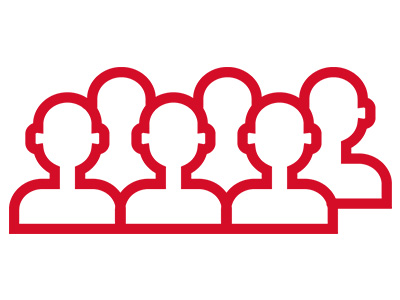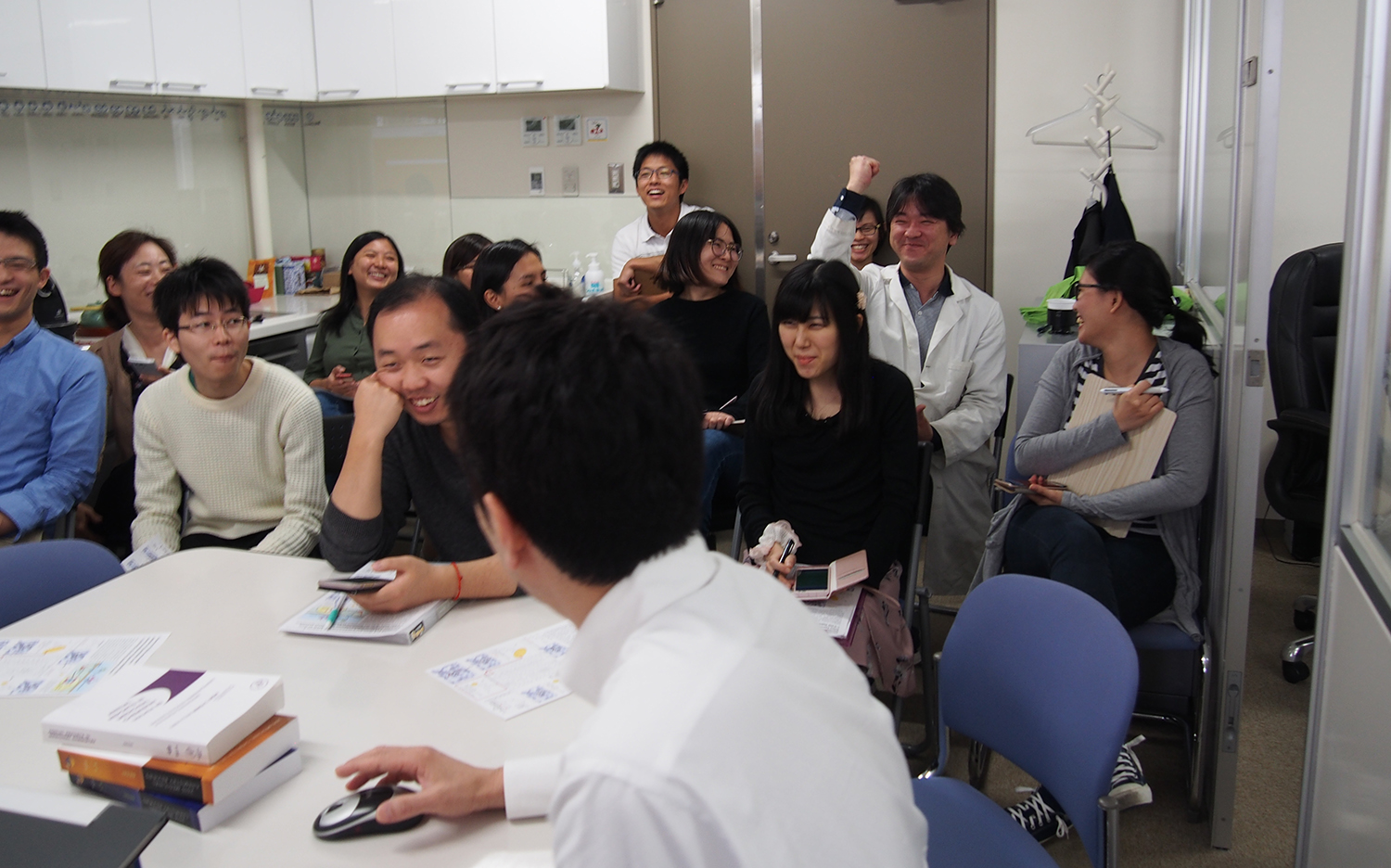- バックアップ一覧
- 差分 を表示
- 現在との差分 を表示
- ソース を表示
- join-us へ行く。
- 1 (2017-07-25 (火) 17:15:23)
- 2 (2017-07-25 (火) 17:27:45)
- 3 (2017-07-26 (水) 10:42:28)
- 4 (2017-07-26 (水) 16:28:39)
- 5 (2017-07-27 (木) 19:51:50)
- 6 (2017-07-28 (金) 12:10:51)
- 7 (2017-07-28 (金) 18:51:36)
- 8 (2017-08-01 (火) 20:46:59)
- 9 (2017-08-02 (水) 13:05:05)
- 10 (2017-08-02 (水) 20:14:20)
- 11 (2017-08-07 (月) 11:56:32)
- 12 (2017-11-13 (月) 18:22:12)
- 13 (2021-05-25 (火) 22:31:17)
- 14 (2021-05-25 (火) 23:05:25)
 | Join us |
Why study chemical biology? †
Life is driven by chemistry. All biological events, from gene expression to energy production, are driven by sequences of chemical events. Chemical understanding and manipulation of biological processes through chemical biology technology will open up new avenues in drug discovery and medical science as well as in chemistry and biology themselves.
By pursuing chemical biology, you will be able to learn both chemistry and biology at the highest of levels. Once you master chemical biology skills and thinking, you will be able to see biological processes with through the eyes of a chemist and chemical processes through the eyes of a biologist. Your multifaceted skills will give you a unique advantage in research. It may be YOU who revolutionizes your field!

For prospective graduate students †
| What to do |
| *From Sept. (M1) to Aug. (M2) | Examination with recommendation from Professor Uesugi (*) |
| Sept. (M2) | Apply for examination to Graduate School of Medicine (Select either three-year PhD program in Medical Science or four-year PhD program in Medicine) |
| Nov. (M2) | Examination, announcement of exam results(Passing rate of examination for those who received recommendation from Uesugi Laboratory is 100%, with high scores.) |
| Following April | Enrollment |
(*)Standard for recommendation screening
Every year, many brilliant students visit the chemical biology laboratory. During such visits, we create opportunities to discuss the students’ goals and visions. These discussions help us determine whether and how Uesugi Laboratory could help the candidate students in their future careers and achievement of goals. Candidates that receive recommendations are selected based on comprehensive evaluation of eligibility, taking into consideration opinions from every member of the laboratory. Normally, recommendations are given to up to two students every year.
As Master's Program students: Uesugi Laboratory accepts only a small number of Master's Program students. Application procedures are the same as those of the Doctoral Program. To take the Master's Program examination for the Kyoto University Graduate School of Medicine, students must contact the laboratory of their choice beforehand. Also, students are required to pass the graduate school entrance exam given every September.
We do not accept undergraduate students.
Training and treatment after enrollment †
The Chemical Biology Uesugi Laboratory adheres to the small-group policy with emphasis on originality, minimizing unnecessary clerical work by postdoctoral fellows and students. We keep alive our passion for research, and by learning from each other we generate new ideas and conduct experiments. Members of this laboratory must always be ready to receive inspiration, analyze and execute. Our small-group policy enables us to provide financial support to every student in the Doctoral Program. For Japanese students, our aim is for everyone to receive a Research Fellowship for Young Scientists from the Japan Society for the Promotion of Science. As for international students, all are government-sponsored. Those who do not qualify for the Research Fellowship for Young Scientists are employed as RAs. Master's Program students may be employed as TAs during their second year. Our lab is located in two campuses, one in the Institute for Chemical Research (Uji Campus) and the other in the Institute for Integrated Cell-Material Sciences (Yoshida Campus), and the two laboratories are connected via a videoconferencing system. The laboratory in the Institute for Chemical Research went through full renovation in March 2010. Our lab provides each Doctoral Program student with a desk with panel, a lab table and a refrigerator. Laboratory membership is usually 30% synthetic chemists, 30% biologists and 30% both. Skill training is available in the fields of organic chemistry, analytical chemistry, biochemistry, molecular biology and cellular biology. Aside from skill training, the laboratory also emphasizes training in abilities of presentation, problem solving and idea creation. By the time they complete the Doctoral Program, students will have mastered all the know-how possessed by the chemical biology laboratory. In our lab meetings, presentations are all given in English. We have two types of laboratory seminars and a chemical tracing club (chemical compound guessing game) on a regular basis.
 |
Lab Meeting †
Our lab-meeting schedule consists of two series of presentations. In one, a discussion leader talks about a short paper that he or she thinks VERY interesting (every one of scientists has a couple of such papers that he/she never forgets), and we discuss why the paper is exciting. The goal is to deduce the principles or concepts behind interesting papers and apply them to our own research. The discussion leader should e-mail a PDF version of the paper to everybody in the group before the presentation. In the other series, a lab member gives a 15-min talk about his/her own research and summarizes his/her progress. The goal is to polish presentation/discussion skills and to discuss the experimental results. Your presentation needs to convey concepts and results in a very clear and concise manner. A good presentation also infects the audience with the excitement of the speaker. A chairperson is assigned to each presentation. The chairperson needs to introduce the speaker and ask good and constructive questions. In both series, speakers are encouraged to use a projector and required to speak English for the presentation. Questions and answers can be made in Japanese. However, it is always encouraged to speak English. If Japanese was used for part of discussion, Dr. Uesugi will provide English translation of a summary of the discussion to non-Japanese members.
Chemical Tracing Club (Detective Quiz of Small Molecules) †
It is a challenge to predict the biological activity or target(s) of a small organic molecule from its chemical structure. The aim of Chemical Tracing Club is to train our eyes for such prediction by discussing structure-activity relationships of reported bioactive compounds. In the club, we freely discuss structures, pharmacological effects, and molecular targets of bioactive compounds. Uesugi will pick up one recently published molecule every week and assign it to the discussion leader of the week. What the discussion leader is supposed to do is to trace the structure of the assigned molecule back to that of the original lead compound, to investigate other structure classes that target the same protein, and to extract the possible chemical signatures for the biological activity. The other members of the laboratory can independently investigate the structure of the molecule to stimulate discussion. The discussion leader should make a summary (only single-page diagrams) before the discussion and e-mail their PDF versions to everybody in the group, and he or she needs to input the revolution of molecules in the database (Emil). Discussion leaders are required to speak English for the presentation. Questions and answers can be made in Japanese. For non-Japanese members, Dr. Uesugi will provide English translation of a summary of the discussion right after each club.
